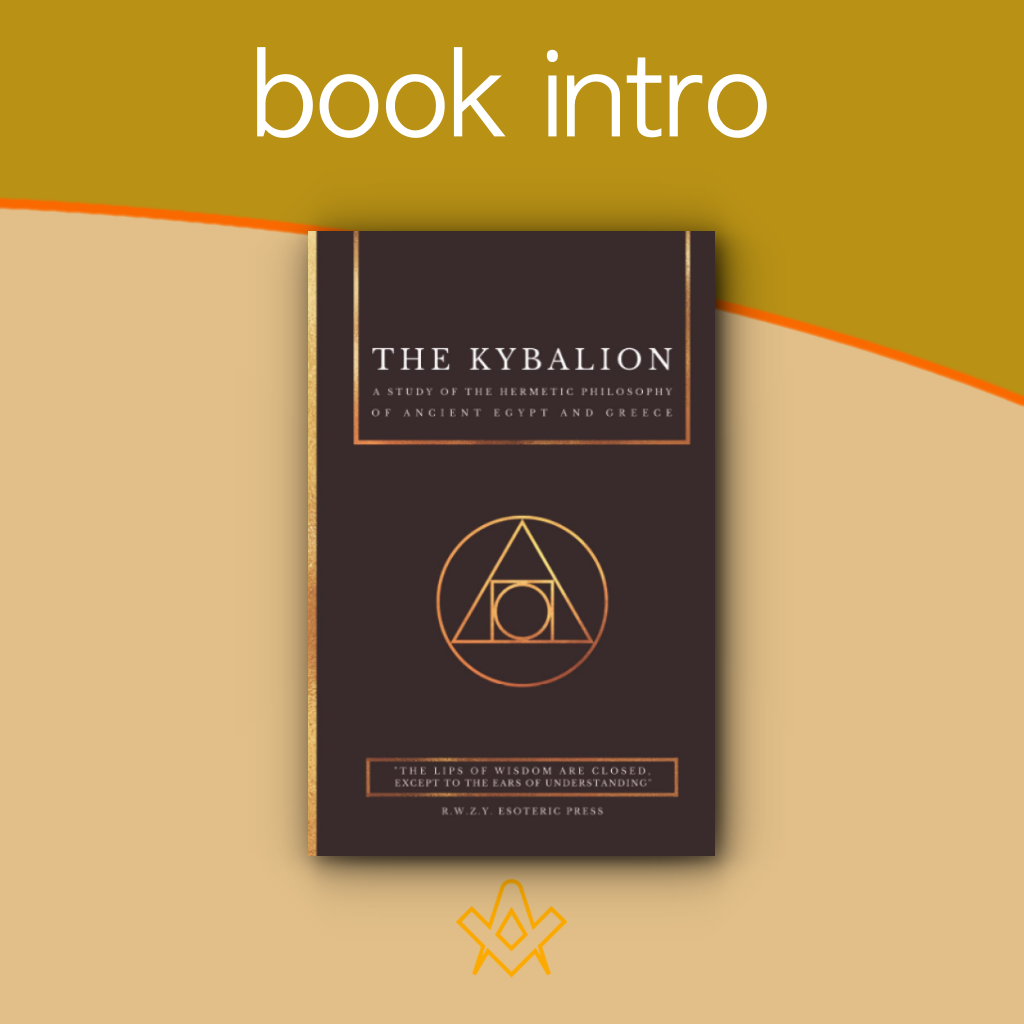Unravel the secrets of the ancient Egyptian wisdom with our comprehensive guide to the Kybalion, by Three Initiates.
A Deep Dive into the Hermetic Philosophy. When it comes to exploring the tapestry of human thought and spirituality, few texts offer as unique a weave as the “Kybalion”.
Unveiled to the public in 1908 by mysterious authors known as the “Three Initiates”, the Kybalion is a cornerstone of Hermetic philosophy, the study of wisdom tracing back to ancient Egypt.
This mystic compilation has inspired generations, fuelling contemplation and personal exploration in those seeking to comprehend the complexities of existence.
Origins and History of the Kybalion
The Kybalion’s roots extend deep into the soil of human history. The Hermetic tradition from which it sprouts has its genesis in ancient Egypt, with the god of wisdom, Hermes Trismegistus, or the ‘Thrice-Great Hermes’, at its core. Over centuries, this wisdom spread, refined, and distilled into various esoteric teachings.
The Kybalion emerged from this tradition, introduced by the elusive “Three Initiates”. Despite rampant speculation and debate, the authors’ true identities remain shrouded in mystery.
This enigma has sparked controversy, intriguing seekers and sceptics alike, contributing to the allure of the Kybalion.
The Seven Hermetic Principles: The Heart of the Kybalion
At its core, the Kybalion holds seven Hermetic principles. These precepts, grounded in ancient wisdom, illuminate the mysterious operations of the universe and the human mind.
The Principle of Mentalism
The Kybalion starts with a powerful assertion: “The All is mind; the Universe is mental.” This principle of Mentalism underscores the fundamental idea that everything we perceive, including the universe itself, is ultimately a mental creation. Our thoughts and perceptions shape our reality, thus becoming a key to understanding and influencing the world around us.
The Principle of Correspondence
“As above, so below; as below, so above.” This principle underlines the idea that there is a harmony, agreement, and correspondence between the physical, mental, and spiritual realms. It is the foundation for practices such as astrology and tarot, asserting that the microcosm and macrocosm reflect each other.
The Principle of Vibration
The Principle of Vibration suggests that everything in the universe is in a constant state of motion or vibration. From the smallest particle to the vast cosmos, everything is constantly moving, vibrating, and pulsating. By understanding these vibrations, we can harmonize ourselves with the rhythm of the cosmos.
The Principle of Polarity
The Principle of Polarity explores the dual nature of everything in existence. All things have two poles, opposites, yet connected, like two sides of a coin. Love and hate, good and evil, hot and cold – understanding this principle enables one to transmute one state into another, fostering personal growth and change.
The Principle of Rhythm
The Principle of Rhythm embodies the universal law that everything exists in a measured motion, from cycles of creation and destruction to the ebb and flow of tides. By recognizing these rhythms, one can harness their momentum, moving in sync with life’s ups and downs instead of against them.
The Principle of Cause and Effect
Every action has a reaction, every cause an effect. This principle underscores that nothing happens by chance; there’s a reason behind every occurrence. Understanding this principle enables one to be the cause rather than the effect, leading a more proactive and mindful life.
The Principle of Gender
The final principle, the Principle of Gender, expresses the idea that gender exists in all things, that all have masculine and feminine principles. This principle goes beyond physical characteristics and explores the conceptual and spiritual aspects of masculinity and femininity. Balancing these elements within oneself is key to inner harmony and wholeness.
The Kybalion and Modern Thought
While the Kybalion might seem cloaked in antiquity, its influence on contemporary thought is far from trivial. It’s a testament to its enduring relevance that it continues to permeate modern intellectual and spiritual arenas.
In the realm of the New Thought movement, the Kybalion’s principles have become instrumental, echoing in teachings on positive thinking, law of attraction, and mind over matter. They underscore the movement’s emphasis on harnessing mental powers to achieve health, prosperity, and spiritual growth.
The impact of the Kybalion stretches even into the scientific domain, particularly quantum physics and cosmology, where the principles of vibration, polarity, and mentalism seem to find curious parallels.
Equally, modern psychology finds a resonant echo in the Kybalion, especially with the principles of rhythm, cause and effect, and mentalism, reflecting on human behaviour, thought patterns, and cognitive biases.
Criticisms and Controversies
Despite its influence, the Kybalion hasn’t escaped criticism. Some point to historical inaccuracies and dubious claims about its ancient Egyptian origins. Others question the authenticity of the ‘Three Initiates’, sparking heated debates about the book’s true authorship.
From a philosophical perspective, some critics argue that the Kybalion’s principles oversimplify complex realities. Certain religious traditions may also reject the Kybalion’s emphasis on human mental power and self-transformation as opposed to divine intervention.
Such critiques, while valid, often lead to deeper explorations of the Kybalion, sparking intellectual discourse and personal reflection.
Final Reflections on the Kybalion
Despite its controversies, the Kybalion remains a significant piece of philosophical literature. Its universal principles provoke thought and encourage introspection. Its mystical origins and age-old wisdom continue to inspire, capturing the minds of seekers around the globe.
The Kybalion serves as a guide to the inner cosmos, a beacon of light guiding those navigating the labyrinth of existence. As with all such wisdom, its power lies in personal interpretation and application.
Further Reading and Resources
For those intrigued by the Kybalion and its exploration of the Hermetic philosophy, numerous texts and resources await discovery. Authors like Manly P. Hall, Aleister Crowley, and Dion Fortune have expounded on Hermeticism, offering various perspectives.
Online, a wealth of resources are available, including forums, blogs, and academic articles. Courses and workshops offer a more structured exploration into Hermeticism and its practical application.
The Kybalion, despite its brevity, is an expansive gateway to a world of wisdom. This seemingly simple text holds a cosmos of meaning, offering a compass to navigate life’s complexities. Its principles, once understood and integrated, can lead to profound transformation, mirroring the ancient Hermetic axiom, “As within, so without”.
The Kybalion: An Overview of Hermetic Philosophy
Introduction
Overview of the Hermetic philosophy
Brief history of the “Kybalion”
Importance of the Kybalion in the modern worldOrigins and History
Origin of the Hermetic tradition
Historical development in ancient Egypt
Hermes Trismegistus: the central figure of Hermeticism
History of the Kybalion
Published by the “Three Initiates” in 1908
Controversies and debates about its authorsThe Seven Hermetic Principles
The Principle of Mentalism
The Principle of Correspondence
The Principle of Vibration
The Principle of Polarity
The Principle of Rhythm
The Principle of Cause and Effect
The Principle of GenderThe Kybalion and Modern Thought
Influence on the New Thought movement
Impact on modern psychology
Influence on quantum physics and cosmology
Role in popular culture and literatureCriticisms and Controversies
Discrepancies and historical inaccuracies
Debate over authorship and authenticity
Critiques from religious and philosophical perspectives
Response to the criticismsConclusion
Ongoing relevance of the Kybalion
Modern interpretation and personal exploration
Final reflections on the Hermetic tradition and the Kybalion
Recent Articles: in this series
 Book Intro: The Secret Doctrine Explore the profound synthesis of science, religion, and philosophy in H.P. Blavatsky's "The Secret Doctrine." Discover the true depth of Theosophy beyond the oversimplified term "Esoteric Buddhism" and uncover the universal wisdom that transcends religious boundaries. A compelling introduction to Theosophical literature and its broader, esoteric truths. |
 Book Intro - The craftsman and freemason's guide Dive into the enigmatic world of Freemasonry with Cornelius Moore's comprehensive guide. Uncover the symbolic rituals, trace the fraternity's historical roots, and gain a deeper understanding of this age-old society. Perfect for Freemasons and curious readers alike. Unlock the secrets of Freemasonry today! |
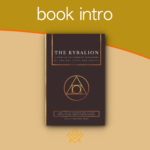 Unravel the secrets of the ancient Egyptian wisdom with our comprehensive guide to the Kybalion, by Three Initiates. Discover its influence on modern thought, the controversies surrounding it, and its seven profound Hermetic principles. Unlock the power of these timeless teachings to transform your understanding of life's mysteries. |
 Book Intro - The Working Tools of an Old York Master by Wilmshurst Unlock the Secrets of Freemasonry! Dive into the profound symbolism of 'The Working Tools of an Old York Master.' Discover the hidden meanings behind the square, compass, plumb line, and more. Embark on a transformative journey of personal growth and spiritual enlightenment. Uncover the ancient wisdom that has shaped generations of Masons. |
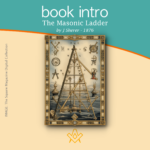 Book Intro - The Masonic Ladder by J Sherer Unlock the mysteries of Freemasonry with "The Masonic Ladder" by J. Sherer - - 1876. This 19th-century guidebook takes readers on a journey through the steps of the Masonic ladder, from the basic principles of the Entered Apprentice to the highest degree of the Sovereign Grand Inspector General. Discover the symbolism, allegory, and values of Freemasonry in this timeless classic. |
 Book Intro - The London mason in the seventeenth century The London Mason in the Seventeenth Century by Douglas Knoop offers a comprehensive examination of the lives and work of masons in the bustling city of London during the seventeenth century. The book delves into the intricacies of their craft, the socioeconomic and political forces that influenced their profession, and the role they played in shaping the architectural landscape of London. |
 Book Intro - History of Freemasonry, Gould, Robert Freke The History of Freemasonry is a comprehensive overview of the origins, development, and evolution of Freemasonry from its ancient roots to the modern era. The book explores the fascinating history of one of the oldest and most mysterious organisations in the world, which has been the subject of much speculation and curiosity over the centuries. - by Robert Freke Gould |
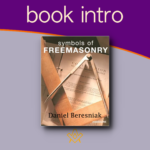 Book Intro - Daniel Beresniak Symbols Of Freemasonry This book is a collection of the symbolic images which Freemasons encounter on their journeys of transformation.' The texts and illustrations form an intimate dialogue whose subject is Freemasonry, and which casts light on the relationship between dreams and reality, reason, intuition and imagination. |
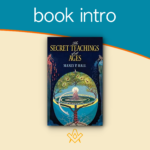 Book Intro - The Secret Teachings of All Ages by Manly P Hall The Secret Teachings of All Ages by Manly P Hall is a comprehensive and in-depth exploration of the various esoteric and occult traditions that have shaped human history. The book covers a wide range of subjects including alchemy, astrology, mysticism, and secret societies, and provides detailed explanations of the underlying principles and concepts. |
 Book Intro - Duncan's Masonic Ritual and Monitor Duncan's Masonic Ritual and Monitor is an impression of the Old York Rite published in New York in 1866. |
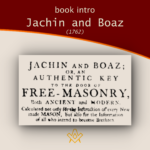 Book Intro - Jachin and Boaz (1762) Thirty two years after Samuel Prichard's Masonry Dissected (1730) a second detailed exposure was published Jachin and Boaz (1762) attributed to the same author, and met with equal distain by Freemasons of the time. However, these exposures offer the masonic historian an invaluable view in to how freemasonry was conducted during its early formation |
 Book Intro - Three Distinct Knocks (c.1760) Giving an exact account of all their proceedings in making a brother, with the three obligations or oaths belonging to the first second, and third degrees of masonry, viz. The entered apprentice, fellow-craft, and master-mason: with the obligating on belonging to the chair, and the grip and word. |
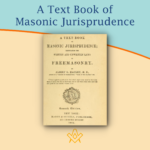 Book Intro - A Text Book of Masonic Jurisprudence An introduction to Albert Mackey's seminal work on Masonic Jurisprudence – the theory or philosophy of Masonic law. The Foundations of Masonic Law are to be found in the Landmarks, or Unwritten Law, and in the Ancient Constitutions, or the Written Law. These constitute the subject matter of the book. |
 Book Intro - The Perfect Ceremonies Of Craft Masonry 1871 A beautiful example of a the rituals, produced in a Medieval illuminated script style. Facsimiles still exist of this illustrated ritual book, of which the most authentically produced version is that available from the Scottish Rite Masonic Book Club. |
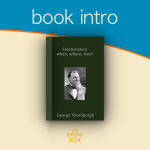 Book Intro – Freemasonry; when, where, how? Introduction to Freemasonry; when, where, how? By George Thornburgh |
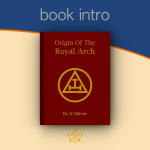 Book Intro - Origin Of The Royal Arch An introduction to the Origin of the Royal Arch, through the eyes of the English nineteenth century masonic author Dr G Oliver (1782–1867) |
 Book Intro – Symbolical Masonry Symbolical Masonry is a treasure-house of Masonic lore, including discussions of key concepts of the first three degrees, along with an extensive study guide. |
 This month we look at – 'A portrait gallery, with biographical sketches of prominent freemasons throughout the United States' |
 Extracted and abridged from The Mystic Tie: Or, Facts and Opinions, Illustrative of the Character and Tendency of Freemasonry By Albert Mackey, |
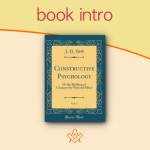 Book intro - Constructive Psychology The introduction to Constructive Psychology or The Building Of Character By Personal Effort by J D Buck a masonic author |
 book intro - Cagliostro: the splendour and misery of a master of magic Preface to the book by William Rutherford Hayes; Cagliostro: the splendour and misery of a master of magic |
 book intro - Origin of the Rosicrucians and the Free-Masons Historico-Critical Inquiry into the Origin of the Rosicrucians and the Free-Masons – Thomas De Quincey |
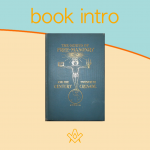 Book Intro - The Genius of Freemasonry The Genius of Freemasonry: “Has any brother anything to offer for the good of Masonry?” The following pages are the author’s answer to that question. |
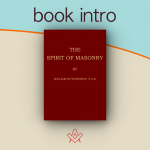 Book Intro - The Spirit of Masonry An essential source for anyone interested in exploring the inner mysteries of the Masonic Fraternity. |
 Book intro - History of Freemasonry Introduction to a classic masonic book by J. G. Findel, History of Freemasonry published 1866 |
 The Book of Constitutions for the Ancient Grand Lodge or Ahiman Rezon |
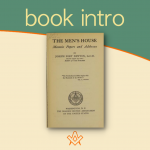 A short introduction to The Men's House, a collection of masonic papers and addresses |
 This is a general survey of Masonic origins, history and philosophy. It was at one time given to every new Mason in Iowa. |
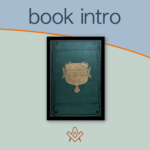 Book Intro - The Discrepancies of Freemasonry Written almost 150 years ago, this book contains wisdom still relevant today. |
 Book Intro - The Principles of Masonic Law "The first great duty, not only of every lodge, but of every Mason, is to see that the landmarks of the Order shall never be impaired". |
 Published in 1911, this fascinating book is equally relevant for the 21st century Mason with an interest in the more mystical side of Freemasonry. |
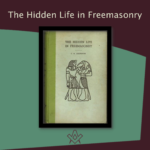 Book Intro - Hidden Life of Freemasonry Introduction to The Hidden Life in Freemasonry (1926) by Charles Webster Leadbeater |
 Book Intro - The Symbolism of Freemasonry Introduction to a classic masonic book; The Symbolism of Freemasonry: Illustrating and Explaining Its Science and Philosophy, its Legends, Myths and Symbols. |
 Book Intro - The Meaning of Masonry This is the Introduction to The Meaning of Masonry, a set of essays which discuss the esoteric side of Masonry |
 Book Intro - Illustrations of Masonry Introduction to Illustrations Of Masonry by William Preston (1742-1818) |
masonic knowledge
to be a better citizen of the world
share the square with two brothers

click image to open email app on mobile device


